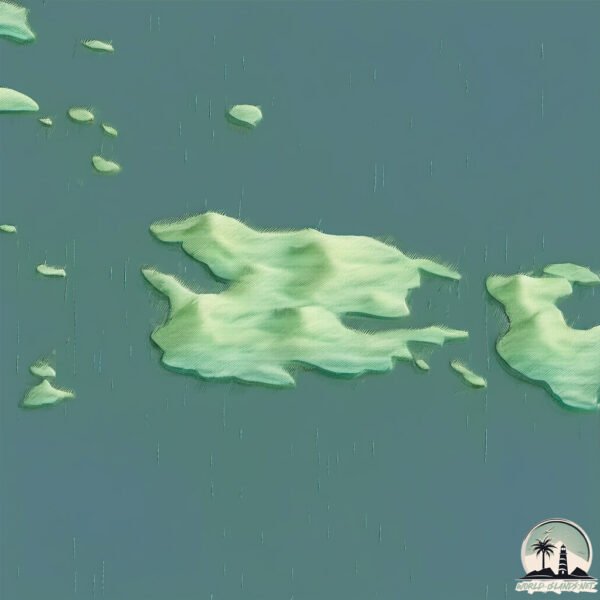Welcome to Krakon , a Continental island in the Gulf of Bothnia, part of the majestic Atlantic Ocean. This guide offers a comprehensive overview of what makes Krakon unique – from its geography and climate to its population, infrastructure, and beyond. Dive into the details:
Geography and size of Krakon
Size: 4.224 km²Coastline: 13.9 kmOcean: Atlantic OceanSea: Gulf of BothniaContinent: Europe
Krakon is a Small Island spanning 4.2 km² with a coastline of 13.9 km.
Archipel: –
Tectonic Plate: Eurasia – One of the world’s largest tectonic plates, the Eurasian Plate covers a significant portion of Europe and Asia. It’s characterized by diverse geological features, including the Ural Mountains, the European Plain, and the Himalayas formed from its collision with the Indian Plate.
The geographic heart of the island is pinpointed at these coordinates:
Climate and weather of Krakon
Climate Zone: ContinentalClimate Details: Warm-Summer Humid Continental ClimateTemperature: Warm Summer
Climate Characteristics: Features warm summers and cold winters with consistent precipitation, common in higher latitudes.
Topography and nature of Krakon
Timezone: UTC+01:00Timezone places: Europe/ParisMax. Elevation: 44 m Mean Elevation: 36 mVegetation: Evergreen Needleleaf ForestTree Coverage: 100%
The mean elevation is 36 m. The highest elevation on the island reaches approximately 44 meters above sea level. The island is characterized by Plains: Flat, low-lying lands characterized by a maximum elevation of up to 200 meters. On islands, plains are typically coastal lowlands or central flat areas.
Dominating Vegetation: Evergreen Needleleaf Forest
Vegetation: 4 vegetation zones – Diverse Island
Infrastructure and Travelling to Krakon
Does the island have a public airport? no .
Does the island have a major port? no .
The mean population of Krakon is 17 per km². Krakon is Gently Populated. The island belongs to Sweden .
Continuing your journey, Agon is the next notable island, situated merely km away.
Kraken Island : Captain's Curse - VEX Adventure - Trailer [EN]
Kraken Island: Captain's Curse is an immersive cooperative adventure game that plunges players into a perilous world of pirate ...
Kraken Island : Captain's Curse - VEX Adventure - Trailer [EN]
Kraken Island: Captain's Curse is an immersive cooperative adventure ...
Kraken Island: Captain's Curse is an immersive cooperative adventure game that plunges players into a perilous world of pirate ...
THE KRAKEN: BOSSFIGHT
- SKULL ISLAND 10 MUSHROOMS GUIDE - (FORTNITE CREATIVE MAP 3469-7377-0976)
Location guide for all TEN Skull Island mushrooms in the THE KRAKEN: ...
Location guide for all TEN Skull Island mushrooms in the THE KRAKEN: BOSSFIGHT Fortnite Creative Map 3469-7377-0976 by ...
This NEW Titan is the Biggest Jerk in the MV - Kraken EXPLAINED
Meet the biggest A**hole in the Monsterverse.. Subscribe to Gojicenter ...
Meet the biggest A**hole in the Monsterverse.. Subscribe to Gojicenter shorts here @Gojishorts The Kraken is the new kaiju seen ...
Sweden is classified as Developed region: nonG7: Developed economies outside of the Group of Seven, characterized by high income and advanced economic structures. The level of income is High income: OECD.
News – Latest Updates and Headlines from Krakon
Stay informed with the most recent news and important headlines from Krakon. Here’s a roundup of the latest developments.
Loading...
Please note: The data used here has been primarily extracted from satellite readings. Deviations from exact values may occur, particularly regarding the height of elevations and population density. Land area and coastline measurements refer to average values at mean high tide.

